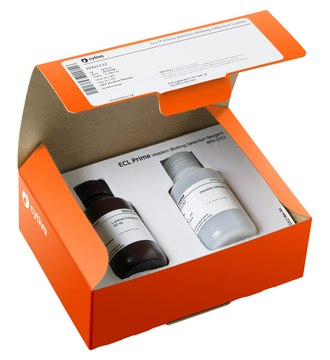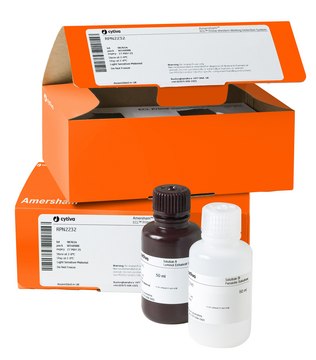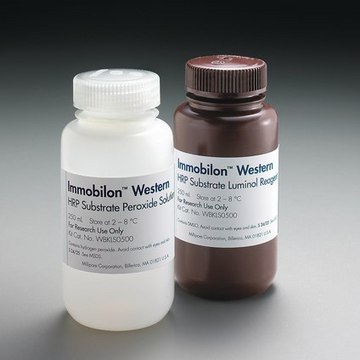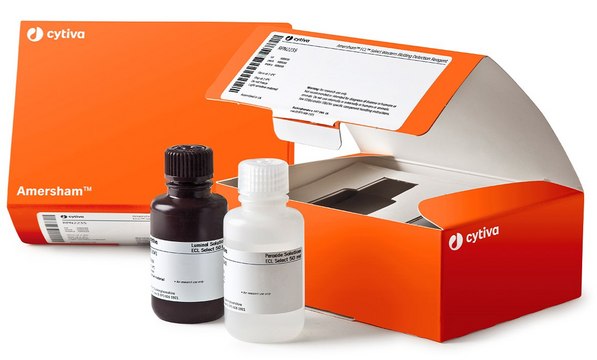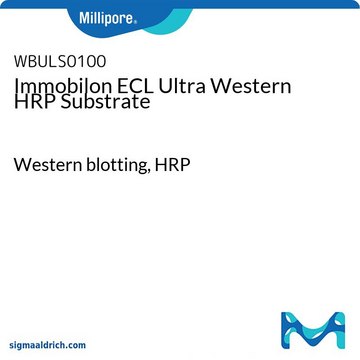GERPN3004
ECL™ Detection Reagents
Cytiva RPN3004, pack of 1 ea
About This Item
Recommended Products
packaging
pack of 1 ea
manufacturer/tradename
Cytiva RPN3004
storage temp.
2-8°C
Related Categories
1 of 4
This Item | GERPN2105 | C43080 | GERPN2109 |
|---|---|---|---|
| manufacturer/tradename Cytiva RPN3004 | manufacturer/tradename Cytiva RPN2105 | manufacturer/tradename - | manufacturer/tradename Cytiva RPN2109 |
| storage temp. 2-8°C | storage temp. 2-8°C | storage temp. −20°C | storage temp. 2-8°C |
General description
Based on the enhanced chemiluminescent reaction of luminol with horseradish peroxidase, ECL substrate can be used to detect probes which have been labelled either directly or indirectly with horseradish peroxidase. Rapid light output enables results to be achieved in 10 to 15 minutes. It is the substrate of choice for target amounts above 500 fg.
High sensitivity and fast results:
- Detects up to 10 to 12 ng of protein, which is ~10× more than colorimetric methods
- Optimized to use with Amersham Protran nitrocellulose (NC) membranes
- Delivers results in just a few minutes, then image using a CCD imager like the Amersham ImageQuant 800 or Amersham Hyperfilm ECL
Storage and Stability
Analysis Note
Legal Information
related product
Storage Class Code
12 - Non Combustible Liquids
Regulatory Information
Choose from one of the most recent versions:
Certificates of Analysis (COA)
It looks like we've run into a problem, but you can still download Certificates of Analysis from our Documents section.
If you need assistance, please contact Customer Support.
Already Own This Product?
Find documentation for the products that you have recently purchased in the Document Library.
Articles
Background and protocols describing the various methods used by molecular biologists to detect samples of protein or nucleic acids bound to membranes.
Our team of scientists has experience in all areas of research including Life Science, Material Science, Chemical Synthesis, Chromatography, Analytical and many others.
Contact Technical Service
